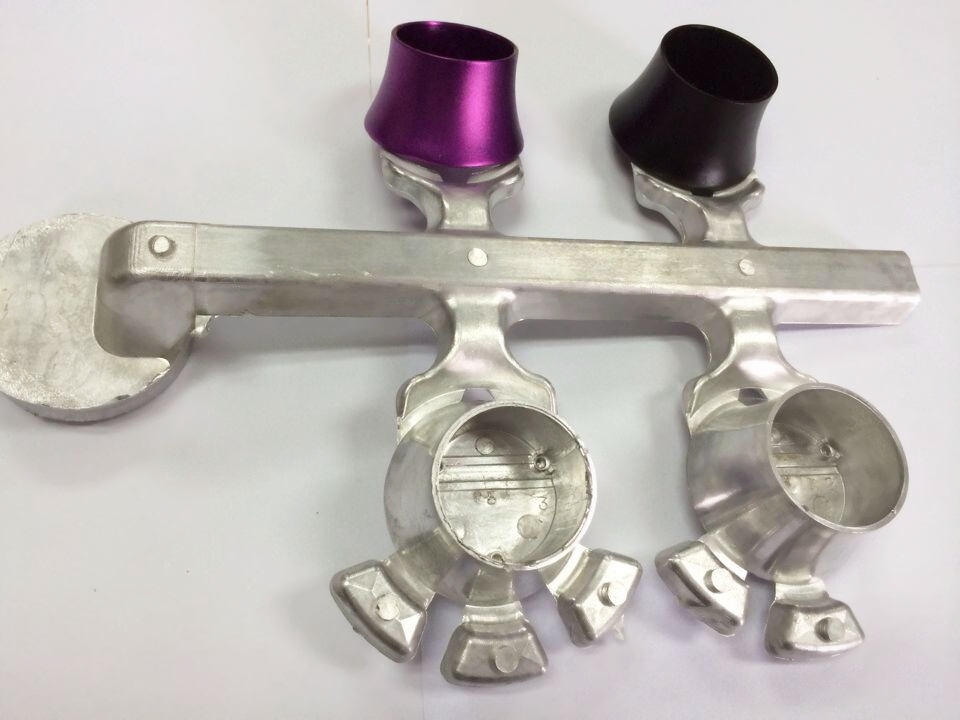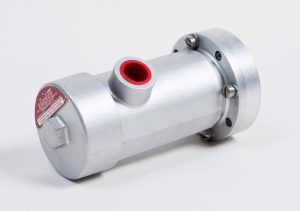Everything About Light Weight Aluminum Castings: Understanding Their Duty and Value in Manufacturing
Aluminum castings are indispensable to contemporary manufacturing, offering a blend of light-weight residential properties and resilience. They promote complicated designs while minimizing assembly expenses. Industries such as vehicle and aerospace regularly make use of these elements for boosted performance. The manufacturing of light weight aluminum spreadings is not without its challenges. Recognizing the nuances of this process reveals both the benefits and possible risks. Checking out these variables will certainly give deeper insights right into their expanding value.
Review of Aluminum Spreading Processes
Light weight aluminum casting processes play a vital function in manufacturing, supplying convenience and effectiveness. These processes involve putting liquified light weight aluminum right into mold and mildews to create specific forms and components. Numerous techniques are employed, consisting of sand spreading, pass away spreading, and investment spreading, each identified by its technique of mold and mildew production and the intended application.
Sand casting makes use of a combination of sand and binder to create molds, enabling for intricate geometries. Die casting, on the various other hand, entails compeling liquified light weight aluminum into steel mold and mildews, resulting in high precision and smooth finishes. Financial investment casting, frequently made use of for elaborate layouts, entails producing a wax pattern coated with a ceramic shell, which is after that loaded with liquified aluminum.
These casting methods satisfy varied commercial demands, making aluminum a recommended material for components in fields such as auto, aerospace, and durable goods. The selection of casting method greatly affects the last item's quality and performance.
Advantages of Utilizing Light Weight Aluminum Castings
The benefits of using aluminum castings in production are significant and many. To begin with, aluminum's light-weight nature adds to decreased total item weight, boosting energy performance in applications such as auto and aerospace sectors. In addition, aluminum castings exhibit excellent corrosion resistance, making sure durability and sturdiness in extreme atmospheres. The material's electrical and thermal conductivity additionally makes it ideal for different applications, consisting of electronic devices and warmth exchangers.
Furthermore, aluminum castings can be created with intricate styles, permitting more complicated forms that meet specific practical requirements. This adaptability adds to lowered setting up prices and improved style flexibility. The casting process itself is reliable, enabling for high-volume production with regular quality. Ultimately, light weight aluminum is recyclable, making it an eco friendly option in manufacturing. Jointly, these benefits highlight why aluminum spreadings are increasingly favored throughout diverse industries, using both performance benefits and financial effectiveness.
Usual Applications of Light Weight Aluminum Castings
While various products are made use of in manufacturing, light weight aluminum spreadings stick out due to their wide range of applications throughout multiple sectors. These spreadings are commonly utilized in the automobile industry for engine components, transmission housings, and structural components, adding to lighter cars and improved fuel performance. In the aerospace industry, light weight aluminum spreadings are essential for airplane elements, where weight reduction is essential for efficiency and safety and security.
Furthermore, the electric industry uses light weight aluminum spreadings for real estates and architectural components in machinery, benefiting from the material's outstanding conductivity. In durable goods, aluminum castings can be discovered in products such as devices and sporting tools, giving toughness and a contemporary aesthetic. Furthermore, the construction sector uses aluminum spreadings in architectural components, home window frameworks, and fixtures, showcasing their adaptability and stamina. Generally, aluminum spreadings play an indispensable role in boosting product efficiency and performance throughout numerous industries.
Key Manufacturing Techniques for Light Weight Aluminum Castings
The production of aluminum castings counts on numerous methods, with sand spreading and pass away casting being amongst the most noticeable. Sand spreading involves producing mold and mildews from sand, enabling for intricate styles and large parts. In comparison, pass away casting utilizes high-pressure shot of molten light weight aluminum right into recyclable molds, supplying precision and effectiveness for mass manufacturing.
Sand Casting Process
Sand casting stands as one of the most extensively used methods for producing light weight aluminum spreadings, thanks to its adaptability and cost-effectiveness. This procedure includes creating a mold and mildew from a mixture of sand and a bonding representative, usually clay. As soon as the mold and mildew is ready, molten light weight aluminum is put into it, allowing the metal to fill the dental caries. After cooling down, the mold is broken away to reveal the casting. Sand spreading fits complex geometries and huge components, making it ideal for different applications. Furthermore, it enables simple adjustments, enabling makers to change designs swiftly. The surface area coating may call for added machining for exact applications, making certain the last item satisfies top quality criteria.
Die Spreading Methods
Die spreading represents a very reliable approach for producing aluminum spreadings, defined by its capacity to deliver high precision and superb surface area finish. This technique primarily entails requiring liquified aluminum right into a mold and mildew under high pressure, making certain that great details and detailed forms are captured properly. There are two main die casting techniques: hot chamber and cold chamber. Warm chamber pass away spreading appropriates for alloys with reduced melting factors and permits faster cycles, while chilly chamber pass away spreading is suitable for high-temperature alloys, requiring separate melting systems. Both methods improve production rates and lower material waste, making pass away casting a recommended selection in industries such as automobile and electronics, where resilience and dimensional precision are paramount.
Sustainability in Light Weight Aluminum Spreading Production
While the need for aluminum castings remains to grow, manufacturers are significantly prioritizing sustainability in their manufacturing processes. This shift is driven by the demand to reduce ecological influence and save natural deposits. Several companies are embracing reusing initiatives, using scrap light weight aluminum, which significantly decreases energy consumption and greenhouse gas discharges contrasted to main aluminum manufacturing. Additionally, advancements in casting technologies are enabling much more reliable use of materials, decreasing waste throughout the production procedure.
Manufacturers are likewise exploring eco-friendly options to typical spreading approaches, such as 3D printing and advanced mold and mildew innovations, which assist enhance resource use. Wisconsin Aluminum Foundry. On top of that, carrying out sustainable methods in supply chain monitoring assurances that raw products are sourced responsibly. As an outcome, the aluminum casting industry is making strides toward an extra sustainable future, straightening with global ecological goals while meeting the enhancing demand for high-performance aluminum items
Challenges and Considerations in Aluminum Casting
Light weight aluminum casting presents different difficulties that makers have to navigate to ensure item stability. Style intricacy can make complex the casting procedure, bring about potential issues and enhanced manufacturing time. In addition, preserving extensive quality assurance criteria is vital to meet the demands of accuracy and integrity in ended up parts.

Style Intricacy Issues
Creating components for aluminum casting offers numerous intricacies that designers have to browse to achieve perfect outcomes. One significant challenge is the demand for precise geometry; detailed designs can cause problems in mold and mildew production and raised risk of issues. Additionally, thermal properties of light weight aluminum necessitate mindful consideration of cooling down rates, as unequal air conditioning can cause bending. Wall thickness variants additionally present a challenge, as they can influence flow features and architectural honesty. Engineers need to balance layout appearances with manufacturability, making sure that functions such as fillets and ribs are maximized for toughness without making complex the spreading process. Finally, factors to consider relating to draft angles are necessary to assist in mold release, additional complicating the layout procedure. These variables jointly highlight the details associated with aluminum casting style.
High Quality Control Challenges
Attaining top notch light weight aluminum spreadings involves steering a variety of top quality control difficulties that can considerably affect the end product. First, variations in basic material composition can cause variances in casting properties, making it important to assure material top quality. Second, the spreading process itself is at risk to defects, such as porosity and shrinkage, which can endanger architectural honesty. Furthermore, temperature control during melting and pouring is important; changes can cause unequal solidification, influencing dimensional precision. In have a peek here addition, extensive inspection methods, consisting of non-destructive testing, have to be employed to identify problems early. Finally, maintaining stringent procedure paperwork and adherence to sector criteria is crucial for traceability and high quality guarantee, highlighting the elaborate equilibrium required to generate reliable light weight aluminum castings in production.
Future Fads in Light Weight Aluminum Spreading Modern Technology
As manufacturers strive to enhance effectiveness and sustainability, advancements in aluminum casting innovation are emerging to meet these straight from the source needs. One substantial fad is the integration of automation and expert system, which improve production procedures and boost precision in casting operations. These advancements minimize human mistake and maximize resource use, ultimately resulting in cost reductions.
Additionally, the fostering of advanced materials and alloys is improving the landscape. New formulations improve efficiency qualities, such as rust resistance and lightweight buildings, making aluminum castings extra functional throughout different sectors.
Sustainable practices are getting traction, with a focus on recycling and reducing waste (Metal Castings). Techniques such as 3D printing are additionally being checked out to develop intricate geometries that were formerly unattainable
Often Asked Questions

Just How Do Aluminum Castings Compare to Various Other Materials?
Aluminum spreadings provide benefits such as light-weight, corrosion resistance, and exceptional thermal conductivity compared to other materials. They are commonly favored for applications requiring sturdiness and efficiency, specifically in aerospace and automobile markets.
What Is the Life-span of Aluminum Castings?
The life expectancy of light weight aluminum spreadings normally ranges from 10 to 50 years, depending on environmental conditions, usage, and upkeep. Their rust resistance and resilience add significantly to their long-lasting efficiency in different applications.
Can Light Weight Aluminum Castings Be Reused?
Yes, light weight aluminum spreadings can be recycled. The reusing process is reliable, enabling the recovery of aluminum without substantial loss of top quality, making it a lasting option in production and decreasing ecological influence.
What Safety And Security Steps Are Needed Throughout Light Weight Aluminum Casting?
During light weight aluminum casting, vital precaution include putting on suitable personal safety devices, guaranteeing proper ventilation, maintaining tools, making use of fireproof materials, and executing safe managing protocols for liquified metal to stop injuries and crashes.
How Do Temperature Level Modifications Impact Light Weight Aluminum Castings?
Temperature level modifications noticeably influence light weight aluminum castings by influencing fluidness, solidification rates, and mechanical properties. Fast cooling can result in increased brittleness, while gradual air conditioning promotes far better architectural integrity and lowers my sources the threat of issues.
Die casting, on the various other hand, includes requiring molten light weight aluminum right into steel molds, resulting in high precision and smooth coatings. The production of aluminum castings depends on different techniques, with sand spreading and pass away casting being amongst the most famous. Sand casting stands as one of the most extensively used methods for producing light weight aluminum spreadings, many thanks to its convenience and cost-effectiveness. Pass away spreading represents a highly reliable technique for creating aluminum spreadings, characterized by its ability to provide high precision and excellent surface area finish. While the demand for light weight aluminum castings proceeds to expand, makers are progressively prioritizing sustainability in their production processes.